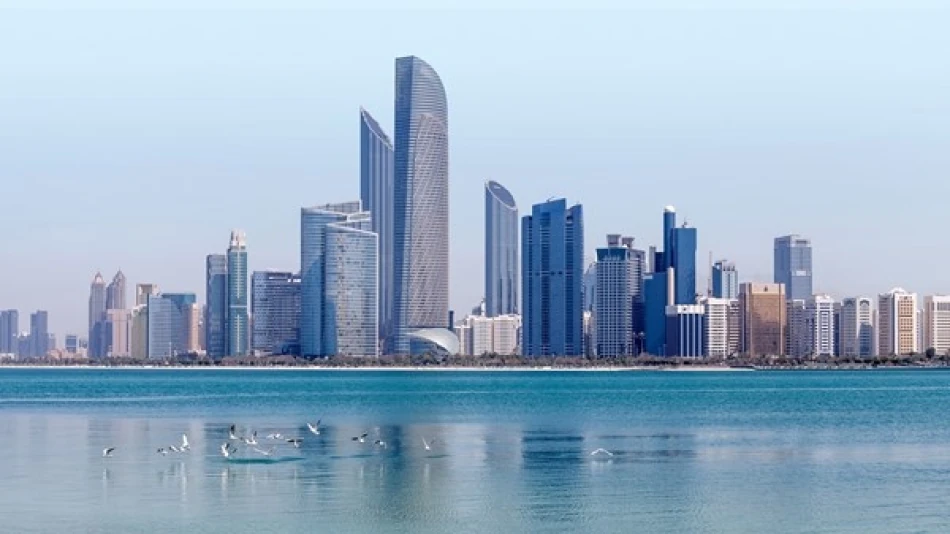
Chance of Thunderstorms and Rainfall Forecasted for Tomorrow
UAE Braces for Mixed Weather Conditions as Summer Heat Peaks Across Emirates
The UAE's National Center of Meteorology forecasts a day of contrasting weather patterns tomorrow, with clear to partly cloudy skies giving way to potential afternoon thunderstorms in eastern and southern regions. As temperatures soar to 47°C in some areas, the weather system reflects the typical volatile conditions that characterize the Emirates during peak summer months, when intense heat meets moisture-laden air masses from surrounding water bodies.
Regional Weather Breakdown: From Scorching Heat to Coastal Relief
The weather map reveals stark regional variations across the seven emirates. Al Silaa in Abu Dhabi's western region will experience the most extreme conditions, with temperatures reaching 47°C and humidity ranging from 35% to 70%. This combination creates particularly challenging conditions for outdoor activities and energy consumption.
In contrast, Fujairah on the eastern coast offers the most temperate conditions, with maximum temperatures of just 34°C but significantly higher humidity levels reaching 85%. This coastal positioning benefits from the moderating influence of the Sea of Oman, though the high humidity creates its own comfort challenges.
Major Urban Centers Face Heat Stress
The UAE's economic powerhouses will experience typical summer conditions. Dubai and Abu Dhabi face maximum temperatures of 44°C and 45°C respectively, with humidity levels that could make conditions feel even more oppressive. These temperatures align with historical summer patterns but continue to stress urban infrastructure and energy grids.
Afternoon Storm Risk Signals Seasonal Transition
The forecast for cumulus cloud formation and potential rainfall in eastern and southern areas represents a significant weather development. These afternoon thunderstorms, while brief, can provide temporary relief from the intense heat but also pose risks including flash flooding in urban areas with limited drainage capacity.
Wind patterns will shift from light to moderate speeds of 15-25 km/h, potentially reaching 45 km/h during storm activity. The southeastern to northeastern wind direction suggests air mass movement that could influence regional weather patterns across the broader Gulf region.
Maritime Conditions Favor Coastal Activities
Both the Arabian Gulf and Sea of Oman will experience light wave conditions, providing favorable circumstances for maritime activities and coastal tourism. The detailed tide schedules indicate peak high tides in the Arabian Gulf at 14:34 and 01:05, while the Sea of Oman sees high tides at 10:21 and 21:37.
Economic Implications of Extreme Weather
These weather conditions carry significant economic implications for the UAE's diversified economy. Energy consumption will likely spike as air conditioning systems work overtime, particularly in inland areas experiencing the highest temperatures. The tourism sector may see increased demand for indoor attractions and coastal destinations offering more moderate conditions.
The potential for afternoon storms also highlights the UAE's ongoing infrastructure challenges in managing sudden weather changes, despite significant investments in flood management systems across major cities.
Regional Climate Patterns in Context
Tomorrow's forecast reflects broader climatic trends affecting the Gulf region, where rising summer temperatures and increased humidity create challenging living conditions. The UAE's weather patterns increasingly mirror those seen across neighboring Gulf states, where extreme heat events are becoming more frequent and intense.
The significant temperature variations between coastal and inland areas – ranging from 34°C in Fujairah to 47°C in Al Silaa – demonstrate the UAE's diverse microclimates within a relatively small geographic area. This variation continues to influence urban planning, agricultural practices, and energy policy across the emirates.
Most Viewed News

 Layla Al Mansoori
Layla Al Mansoori






